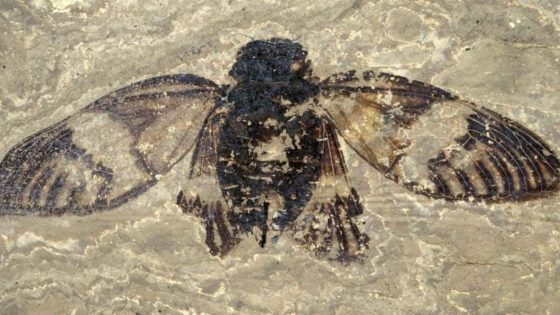A remarkable discovery has emerged from the Messel Pit in Germany, where a 47-million-year-old cicada fossil was found. This fossil, Eoplatypleura messelensis, represents the earliest record of true cicadas in Europe and globally, shedding light on ancient biodiversity. Published on 2025-07-02 23:15:00, this find not only extends the cicada fossil record but also enriches our understanding of their evolutionary history.
- 47-million-year-old cicada fossil discovered
- Earliest record of true cicadas in Europe
- Messel Pit vital for paleontological research
- Fossil enhances understanding of cicada evolution
- Wing patterns suggest ancient camouflage strategies
- New genus aids future cicada studies
The fossil was discovered in well-preserved oil shale deposits dating back to the Eocene period, highlighting the significance of the Messel Pit as a paleontological treasure trove. Dr. Sonja Wedmann from the Senckenberg Research Institute notes that while cicadas are diverse today, fossil records are scarce. This discovery helps bridge that gap.
This fossil raises intriguing questions about cicada evolution and their ecological roles. How did these insects adapt to their environments millions of years ago? The well-preserved features of Eoplatypleura messelensis provide a glimpse into their past behaviors and adaptations.
- Fossil adds a new genus and species to cicada records.
- Highlights the ecological roles of cicadas in ancient environments.
- Offers insights into the evolutionary lineage of cicadas.
As researchers continue to explore the Messel Pit, this find could lead to further breakthroughs in cicada research and our understanding of insect biodiversity. What other secrets might the past reveal?

































